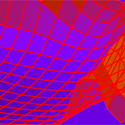Height matters
Although a number of questions remain open, many experiments and calculations suggest that superconductivity in iron pnictides is induced by spin fluctuations that are associated with the nesting of disconnected Fermi surfaces or hole pockets. This mechanism can give rise to a superconducting gap that has -wave symmetry but reverses sign on different pockets. However, a gap with -wave symmetry (which implies nodes in the gap) has not been ruled out.
While many experiments on the superconductor appear to be consistent with the sign-reversing -wave scenario, experiments on seem to suggest the presence of nodes as expected for a -wave gap. Another interesting feature is that the superconducting critical temperature varies widely in the iron pnictide family (from to ).
These observations pose a natural question: what governs the differences between individual pnictide compounds? In an article published in Physical Review B, Kazuhiko Kuroki of the University of Electro-Communications in Tokyo, Japan, and collaborators from several Japanese institutions address this question by constructing five-band models for several pnictide compounds and find that, assuming the superconductivity is mediated by spin-fluctuations, the gap has a strong dependence on the lattice structure. Depending upon the height of the pnictogen atom ( or ) from the (or ) plane, the system can have either a high and a full gap with sign-reversing -wave symmetry (as in and ) or a low with nodes in the gap (as in ). In addition to the height of the pnictogen atom, larger lattice constants increase , although beyond a certain limit the tendency of these parameters to enhance magnetism is likely to dominate over their effect on superconductivity. – Sarma Kancharla





